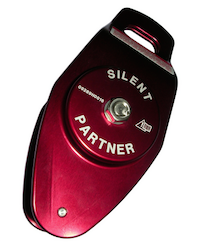Rope Soloing: Is it Strictly for Idiots?
by Michael Powers, IFMGA
AAI Senior Guide & Director for Staff Development
Question:
From the January 2006 edition of AAI's E-newsletter
Is there a technique for rope-soloing that offers a reasonable margin for safety, or is rope-soloing strictly for suicidal idiots?
I've noticed there are soloist belay devices on the market. Do they work with any degree of reliability and are there any such devices that would be appropriate for alpine conditions?
- James Carr (Menlo Park, CA)
Answer:
Dear James,
Thanks for your question on rope-soloing and the opportunity to provide some feedback on a facet of climbing that contains some confusion, misconceptions, and poorly understood practices. It's quite common for both new and experienced climbers to explore and dabble in rope-soloing. However, it quickly becomes more like aid climbing, which requires a whole new set of skills quite different from the normal physical and mental aspects of traditional climbs with partners and their belay systems. Solo climbers must incorporate these new aid skills in addition to their broader, general knowledge of rope systems and protection techniques.
First and foremost, it should be noted that most equipment manufacturers do not list rope-soloing in the "intended" use sections of their user manuals and guidelines. The ones that do (manufacturers of solo-belay devices) caution strongly against certain things and publish elaborate guidelines for the proper use of those devices. In each case, the manufacturer says that proper climbing, protection, and anchor building experience and knowledge is absolutely vital before considering using their products. It's impossible for a company to list all the improper ways of using a device and, conversely, to list all the necessary precautions needed, since each venue has it's own unique hazards that need to be assessed.

The Silent Partner by Rock Exotica
Those cautions having been stated, there are a number of solo climbing/rope-soloing devices on the market. Rock Exotica manufacturers the Silent Partner, Soloist, and the Solo Aid devices. They all have specific uses and design intentions. Some of these devices require a chest harness, some are only for top-roping, some have more rope drag than others, etc. It is not uncommon to see people use a Petzl GriGri as a solo belay device, and it should be noted that this use is outside of Petzl's guidelines and is not recommended because of the device's potential for failure in such applications. One of the limitations in using a Petzl GriGri is that they may not hold in an upside down fall, and it's difficult to rig a chest harness that prevents that. [Ed: Some people even make physical alterations to the device to make it easier to rig with a chest harness, but this voids the warranty and is discouraged.] For more information on the makes, models, user manuals, and warnings you can visit Rock Exotica. Also, Petzl publishes extensive guidelines for equipment use and illustrates scenarios very well in their on-line and published literature.
I think the biggest danger in using these devices is not having any redundancy in the system. In climbing, it's really important not to have your life dependant on one piece of gear. I think gear, per se, rarely fails when used properly, but that we often make some sort of human error and don't allow for the unexpected. So the best system has back ups (as all of the manufacturers suggest, by the way) - and takes into account possible user error. I think soloing has the potential to be made safe only if the climber has a thorough understanding of what the hazards are and has a system that can counter those hazards.
In terms of alpine climbing, do you mean top-roping ice climbs? Or protecting a few moves on a multi-pitch climb? Or lead climbing a single pitch? Without knowing more it's difficult to say what the best system is.
It also depends on what level of climber you are. For example, a GriGri can be used to solo a top-roped climb, but the rope has to be pulled through it manually, requiring one or two free hands. Jumars feed the rope better but will damage the rope in a more severe fall. Prusik knots are non-mechanical and very light but slip easily and cannot withstand the heat from friction when slipping.
Generally, alpine climbs cover much more moderate terrain and it's impractical to protect each and every move. The best defense for alpine climbs is perfecting climbing techniques so that a fall doesn't happen in the first place.
If you are wondering what the best solo belay device is, I would suggest visiting a number of online forums and calling numerous climbers, shops, and other sources and see what the general consensus is for the type of climbing you plan on doing.
- Mike Powers
Click the link to return to "Ask A Guide" Letters.
Program Finder